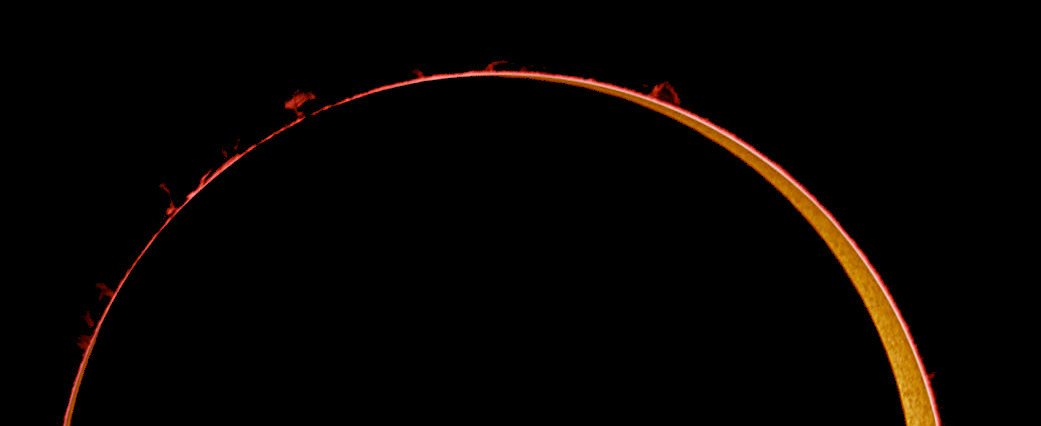Entdecken Sie den Nervenkitzel der Kometenbeobachtung mit Teleskopen und Ferngläsern von Explore Scientific. Dieses aufregende Abenteuer bringt Ihnen die Wunder des Weltraums direkt näher. Folgen Sie dieser Schritt-für-Schritt-Anleitung, um Ihr Kometen-Erlebnis zu maximieren und die Schönheit des Kosmos einzufangen.

Kennen Sie die Position und den Zeitpunkt des Kometen
Überprüfen Sie eine Ephemeride: Verwenden Sie eine zuverlässige Astronomie-App oder die Small Body Database des JPL, um den aktuellen Standort von Kometen. Dadurch erhalten Sie die genaue Position für Ihren Standort und die Uhrzeit.
Um mehr über die Helligkeit und Helligkeitskurve eines Kometen zu erfahren, können Sie die Comet OBServation (COBS)-Datenbank überprüfen.
Planen Sie für dunklen Himmel: Für das beste Beobachtungserlebnis sollten Sie bei Neumond und in lichtverschmutzungsfreien Gebieten beobachten. Wenn Sie nach den besten Standorten für dunklen Himmel suchen, schauen Sie sich den Dark Sky Place Finder an. Kometen entfalten ihre Schönheit am besten, wenn sie bei dunklem Himmel und höher über dem Horizont betrachtet werden.
Wählen Sie Ihre Ausrüstung
Ferngläser: Für Einsteiger und alle, die ein Weitwinkelobjektiv suchen, sind die Ferngläser Alpen Chisos 10x42 ED oder Alpen Chisos 12x50 ED von Explore Scientific eine gute Wahl. Diese Modelle bieten ein helles und weites Sichtfeld, ideal, um den Kometen als schwaches, unscharfes Objekt am Himmel zu erkennen.
Teleskope:
Explore Scientific AR102- oder AR152-Refraktoren: Diese achromatischen Refraktoren liefern scharfen Kontrast und Klarheit und sind daher ideal für Weitfeldansichten der Koma und sogar einiger Details des Schweifes.
Entdecken Sie die APO-Teleskope ED80 oder ED127 von Explore Scientific: Für einen genaueren Blick auf den Kern und den Schweif des Kometen bieten diese apochromatischen Refraktoren außergewöhnliche Schärfe und Farbkorrektur, ideal für visuelle und Astrofotografie-Sitzungen.
Explore Scientific FirstLight Dobson (8" oder 10"): Mit größeren Öffnungen bieten diese Dobson-Teleskope eine hellere und detailliertere Sicht auf den Kometen, wenn er sich der Erde nähert. Sie können mehr Struktur im Schweif und möglicherweise etwas Aktivität in der Nähe des Kerns erkennen.
Vixen R200SS Reflektorteleskop
Das R200SS verfügt über eine sehr lichtstarke f4 200 mm Optik mit parabolischem Hauptspiegel und liefert extrem scharfe Bilder ohne chromatische Aberration. Eine spezielle, mit modernster Technologie hergestellte Beschichtung bietet eine optimale Oberfläche für die Beobachtung und Fotografie von Kometen und Deep-Sky-Objekten.
Einrichten und Ausrichten Ihres Teleskops
Polarausrichtung: Wenn Sie eine parallaktische Montierung wie die Explore Scientific iEXOS100 verwenden, stellen Sie eine korrekte Polarausrichtung sicher, um den Kometen reibungslos über den Himmel zu verfolgen.
Von Stern zu Stern: Richten Sie Ihr Teleskop mithilfe der Explore Scientific ReflexSite auf einen hellen Stern oder Planeten in der Nähe der erwarteten Position des Kometen aus. So können Sie Ihre Verfolgung ganz einfach optimieren und die Bewegung des Kometen leichter verfolgen.
Einen Kometen finden
Fernglas: Suchen Sie den Himmel in dem Gebiet ab, in dem sich der Komet voraussichtlich befinden wird. Suchen Sie nach einem schwachen, verschwommenen „Stern“, der möglicherweise einen Schweif hat.
Teleskope: Beginnen Sie mit einem Okular mit geringer Vergrößerung (25 mm oder 30 mm) für einen weiten Blickwinkel, der das Auffinden des Kometen erleichtert. Sobald Sie ihn gefunden haben, wechseln Sie zu einer höheren Vergrößerung (10 mm oder 15 mm), um mehr Details in der Koma und im Schweif sichtbar zu machen.
Wichtige Funktionen beachten
Der Kern und die Koma: Selbst mit einem Fernglas oder kleineren Teleskopen werden Sie den hellen Kern erkennen, der von einer leuchtenden Koma aus Gas und Staub umgeben ist.
Der Schweif: Je nach Helligkeit des Kometen können Sie seinen Staub- und Ionenschweif beobachten . Verwenden Sie eine mittlere bis hohe Vergrößerung, um die Struktur und Details des Schweifes zu studieren.
Optional: Astrofotografie
Wenn Sie Astrofotografie betreiben, verwenden Sie eine Explore Scientific-Montierung wie die iEXOS100 mit ihrem PMCEight-System, um den Kometen mit einer DSLR oder einer speziellen Astrokamera zu verfolgen. Lange Belichtungszeiten können unglaubliche Details im Schweif und in der Koma enthüllen. Für beste Ergebnisse verwenden Sie einen Weitfeld-Refraktor wie den Explore Scientific ED80.
Dokumentieren und teilen
Teilen Sie Ihre Beobachtungen und Bilder unbedingt mit lokalen Astronomiegruppen oder Online-Communitys. Ob Sie Ihren ersten Blick auf die Sterne erhaschen oder an globalen Kometenverfolgungsprojekten teilnehmen – Ihre Beiträge bereichern die gemeinsame Erfahrung der Erforschung des Kosmos.
Wenn Sie mit den erstklassigen Teleskopen und Ferngläsern von Explore Scientific einen Kometen beobachten, werden Sie Teil einer Reise, die Ihnen das Universum näher bringt und sowohl neuen als auch erfahrenen Astronomen ein unvergessliches Erlebnis bietet.



Hinterlasse einen Kommentar
Alle Kommentare werden vor der Veröffentlichung geprüft.
Diese Website ist durch hCaptcha geschützt und es gelten die allgemeinen Geschäftsbedingungen und Datenschutzbestimmungen von hCaptcha.